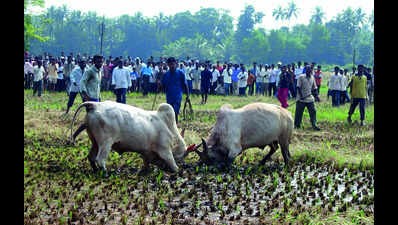Increase in Real Income for Small and Marginal Farmers
Prelims: Current events of national and international importance
Why in News?
Recently, Minister of State for Agriculture and Farmers Welfare highlighted that government initiatives have significantly increased farmers’ income during the last five years.
|
Situation Assessment Survey (SAS) of Agricultural Households |
|
|
Minimum Support Prices (MSPs) for 22 mandated crops |
Sugarcane is also included, but with a Fair and Remunerative Price (FRP) rather than an MSP. |
Reference
PIB| Increase in Real Income for Small and Marginal Farmers
Deendayal Antyodaya Yojana – National Rural Livelihoods Mission (DAY-NRLM)
Prelims: Current events of national and international importance | Government policies and interventions
Why in News?
The Minister of State for Rural Development recently described the achievement of the target under Deendayal Antyodaya Yojana – National Rural Livelihoods Mission.
As of June 2025, a total of 10.05 crore women has been mobilised into 90.90 lakh Women Self-Help Groups (SHGs) in the country.
Reference
PIB| Deendayal Antyodaya Yojana – National Rural Livelihoods Mission
Loss of Great Barrier Reef Coral
Prelims – Current events of national and international importance | General issues on Environmental ecology, Bio-diversity and Climate Change.
Why in News?
Recently, Australian authorities reports that the Great Barrier Reef has experienced its greatest annual loss of live coral across most of its expanse in four decades.
Great Barrier Reef
Recent findings
Quick Facts
|
Corals |
Coral reefs cover only 1% of the ocean floor, but support an estimated 25% of all marine life in the ocean, earning them the moniker ‘rainforest of the sea.’ |
Reference
The Hindu| Great barrier reef loss
Dhirio - Bull Fighting
Prelims – History of India, Current events of national importance.
Why in News?
Recently, Legislators from all parties in the Goa assembly have demanded the legalisation of bull fighting.

Reference
The Indian Express – Bull Fight
|
One Liners 12-08-2025 |
|
Geography |
|
Uranium Deposits in India Atomic Minerals Directorate for Exploration and Research (AMD) has established 4,33,800 tonnes of Uranium resources (U3O8) in India.
|
|
Atomic Minerals Directorate for Exploration and Research
|
|
International Relations and Issues |
|
‘World Food India’(WFI) Conference The WFI conference will be held at the end of October in India.
|
|
Economy |
|
Bureau of Indian Standards (BIS) Recently, Ayush collaborated with BIS for formulation of Indian Standards including traditional and modern aspects of products and services.
|
|
Agriculture |
|
Digital Agriculture Mission
|
|
Agri Stack
|
|
Science |
|
Cancer AI & Technology Challenge (CATCH) Grant Program
|
|
IndiaAI Independent Business Division (IBD)
|
|
WaveX
|
|
Miscellaneous |
|
Wainwright Prize Recently, Mr. Yuvan Aves who became 1st South Asian writer to be nominated for the Wainwright prize.
|